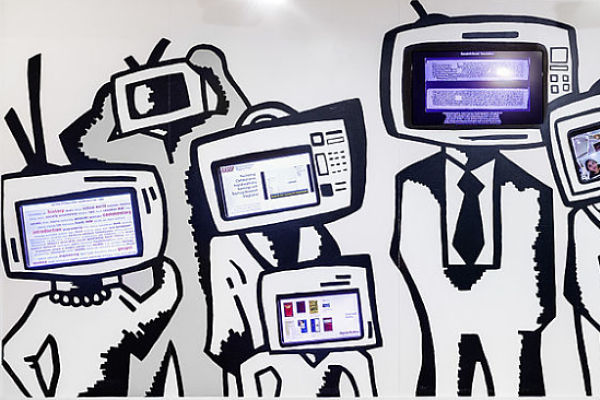Mark Carrigan Asks If We’re All Digital Scholars Now?

It’s been less than a decade since Martin Weller published The Digital Scholar, a book which excited myself and many others in its promise of a transformation of scholarly practice facilitated by digital technology. It was obvious to me as a PhD student at the time that I wanted to be a digital scholar and Weller’s vision of a slightly nomadic intellectual, working in the open and across disciplinary barriers was a huge influence over my ensuing work and how I tried to carry it out.
There’s an obvious sense in which we were already digital scholars, in so far as we communicated via e-mail, read electronic journals and used online databases. However, the point Weller was making is that more radical possibilities for digital scholarship were opening up as a consequence of the new platforms, services and tools that had been released over the previous decade. This scholarship would be ‘digital, networked and open’: sharing far more of what we do, at declining cost, whilst at the same time discussing what others in our network have shared and done. The fact this interaction would take place online, outside the traditional venues of the conference or seminar, carried obvious implications for higher education. These technologies were ‘fast, cheap and out of control’, unsettling the power structures of the academy by allowing people to quickly and easily coordinate and collaborate across institutional boundaries. As Weller put it, “in a digital, networked, open world people become less defined by the institution to which they belong and more by the network and online identity they establish.” The challenge was how we could develop the practices and routines to ensure we can utilize these platforms and services in constructive and enjoyable ways, as well as how to ensure colleagues and institutions accepted their legitimacy.

The radical future that Weller presented is now with us. Not as we might have expected through a slow process of institutional change. Instead, digital scholarship has been thrust upon us by the crisis of COVID-19 and the unprecedented lockdown now enforced on over a third of the world’s population. With universities around the world shutting down their physical campuses in the name of social distancing, the face to face aspects of academic life that many advocates of digital scholarship imagined would wane in importance have instead vanished in a short sharp shock.
Much of the focus thus far has been concerned with how to keep teaching going and conduct examinations at a distance once students cannot feasibly present themselves in person. In these circumstances we can expect firms offering massively open online courses to see yet another chance to shine after widespread disappointment with their previous offerings.
However, beyond the immediate challenge of keeping the machinery of teaching up and running, there is a deeper transformation underway concerning how academics work together and collaborate. By necessity this involves overcoming the atomization lockdown has imposed upon us and taking advantage of the possibility for connection and cooperation that digital platforms facilitate. But, if we can’t find the means to do this in a critical and reflexive manner then there’s a risk this turn towards the digital will exasperate the existing pathologies of academic life.
How academics use digital platforms to do their work, individually and collectively, is far from the most significant factor in shaping how this crisis unfolds within the sector. However it is a factor which we need to engage with, not least because digital scholarship provides us with a vehicle through which we can reflexively adjust what we do in the face of these events and find ways to negotiate the many difficulties they present.
The disruption will also impact existing forms of non-university based academic organization. The cancellation of annual conferences will have tough consequences for learned societies and professional associations, further exacerbated by the likelihood of diminishing membership income in a sector undergoing a post-COVID contraction. These organisations have been through a transition in recent years, as their members have become less dependent on them for enjoying an intellectual life that transcends institutional boundaries. The current crisis highlights a real need for them to find ways to support intellectual community for their members through virtual means. However, few organizations have invested in their capacity for digital engagement in a serious way. While the returns on academic publishing will see some safely through this crisis, it raises questions about how they will operate in a more financially constrained and more digital post-COVID environment. There are also clear challenges for independent publishers, who lack the size and scale to carry them through months of uncertainty, even perhaps for university presses liable to be caught up in financial contraction at their parent institutions.
The ramifications of COVID-19 will be felt in every academic arena, with their full scale still difficult to predict. How academics use digital platforms to do their work, individually and collectively, is far from the most significant factor in shaping how this crisis unfolds within the sector. However it is a factor which we need to engage with, not least because digital scholarship provides us with a vehicle through which we can reflexively adjust what we do in the face of these events and find ways to negotiate the many difficulties they present. It’s a resource for coordination and collaboration, pursuing self care and solidarity through our everyday practice. It’s not sufficient to achieve these things, but it is necessary, at least when it’s the sole mechanism through which our work is conducted in the lockdown university.
There was a clear thrust in Weller’s original account towards digital technology liberating us from reliance upon our institutions. This is a point Jessie Daniels and Joe Feagin made around the same time, when they spoke of the possibility of ‘curating your own ideal academic department.’ However, now we’re all remote working, digital scholarship is as much a matter of what takes place within your department as what takes place outside of it.
In the coming months we will see much of the mundane work of academic departments conducted through platforms like Slack and Microsoft’s Teams and Zoom. There are privacy and surveillance issues which we need to take seriously in all three platforms, even if the problems of surveillance capitalism look somewhat different when they’re encountered within an organisation, rather than as an external user. Although these are services to which academics may migrate voluntarily, within research clusters or funded projects, we will likely see a tendency towards institutional subscriptions as a matter of practical governance. If lots of groups within your university are paying for individual Zoom subscriptions out of a range of funding sources, then why not save money by centralizing the subscription?
This matters because institutional subscriptions make it possible to scrutinize what takes place on a platform. For example, administrators for institutional Zoom subscriptions, can analyse how many meetings have taken place, how long they lasted and who was present in them. On one level, it’s understandable these features would be available and that universities might use them. Isn’t it reasonable for an institution to analyse the extent and use of resources it is providing for its staff? However, this simply highlights how easily these technologies could be incorporated into the existing apparatus of measurement and evaluation that dominates our existence within the academy.
This raises an obvious question: what happens when the lockdown is over? It would be naive to imagine major changes to working conditions won’t occur, not least when university managers looking to make cuts reflect on the capacity staff have demonstrated to work from home. It’s important to recognize that, as Jamie Woodcock has pointed out, universities have been drifting in this direction for some time, involving “a physical decoupling of the instruments of academic work from a geography of the university” in which the university provides “access to institutional subscriptions, e-mail accounts, and other online resources, that do not require a worker to physically be present within the university itself.” The lockdown has rapidly accelerated this process, pushing this decoupling as far as it can go, while retaining the university as an institutional form.
There are some ways in which this might be positive. How many unnecessary trips to campus will be saved by the normalization of video meetings? How much will the vast carbon footprint of the professoriate be reduced through the normalization of online conferences? Could the shock of the lockdown lead us to develop a greater understanding of how much personal situations vary and what this means for workplace expectations? There are productive possibilities to be found in the bleak weirdness of our present situation and digital scholarship provides us with a framework through which we can think about how to realize them on a practical and mundane level.
To do this we need to talk about how we are using these platforms and services during the lockdown and how this use reflects the particularity of our own situation. What’s going well? What’s going badly? What should we expect from each other? How could we better support each other? Obviously these are questions that extend beyond our use of digital tools and platforms, but issues of digital scholarship are always part of them when we are working remotely. The embrace of these tools throughout the university system is a practical matter of keeping the institution up and running during a time of unprecedented crisis. At the same time, they are a mechanism to overcome our atomization and sustain an intellectual community at a distance. It would be easy to sleepwalk into their unreflective use, as we work our way through the endless list of tasks needed to keep things operating under such difficult circumstances. I’m skeptical that it’s possible to realize the communal possibilities of these platforms, if, we simply muddle through in this entirely understandable way. We urgently need to begin talking about the practice and politics of digital scholarship in the locked down university.
































































































